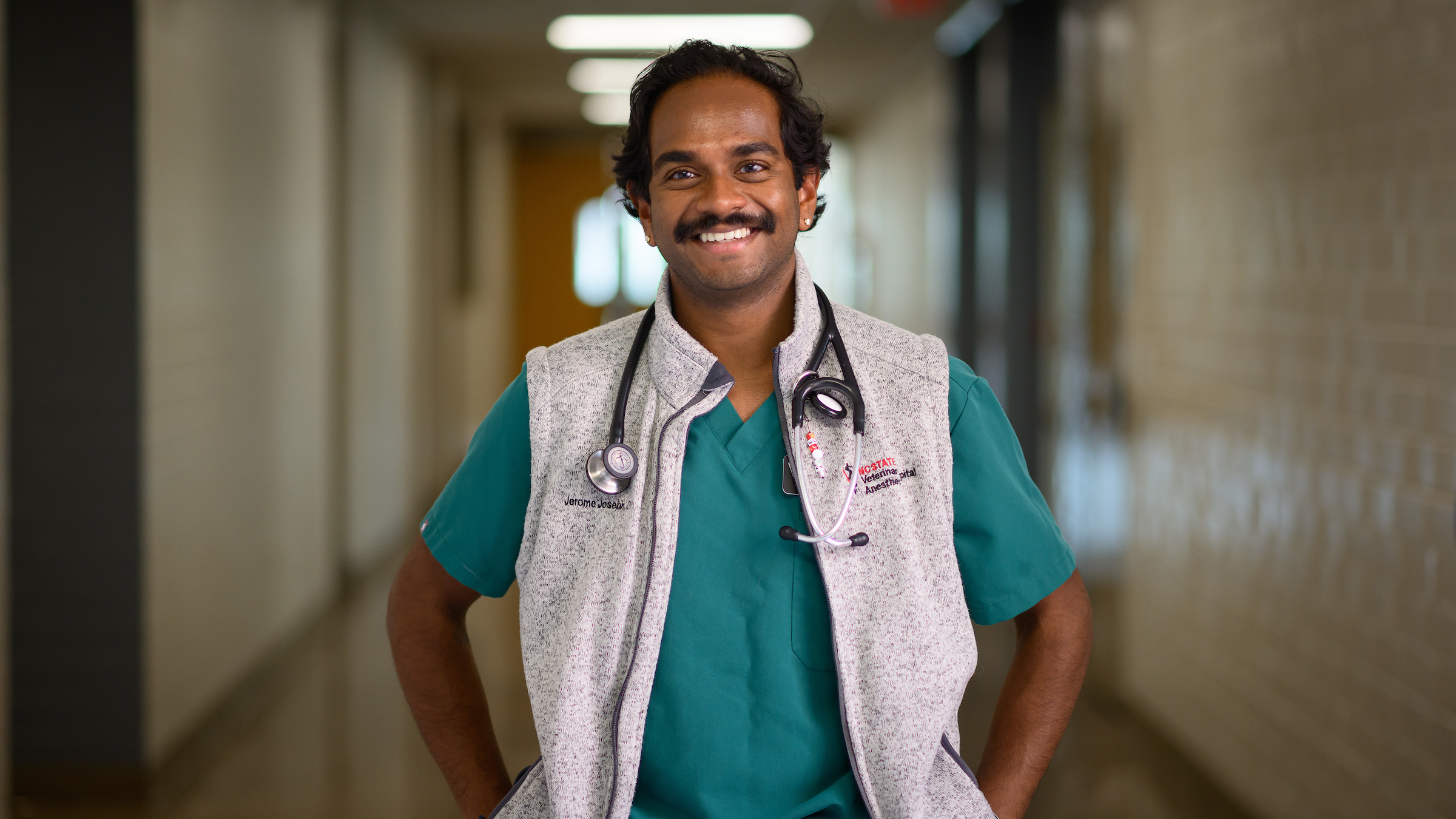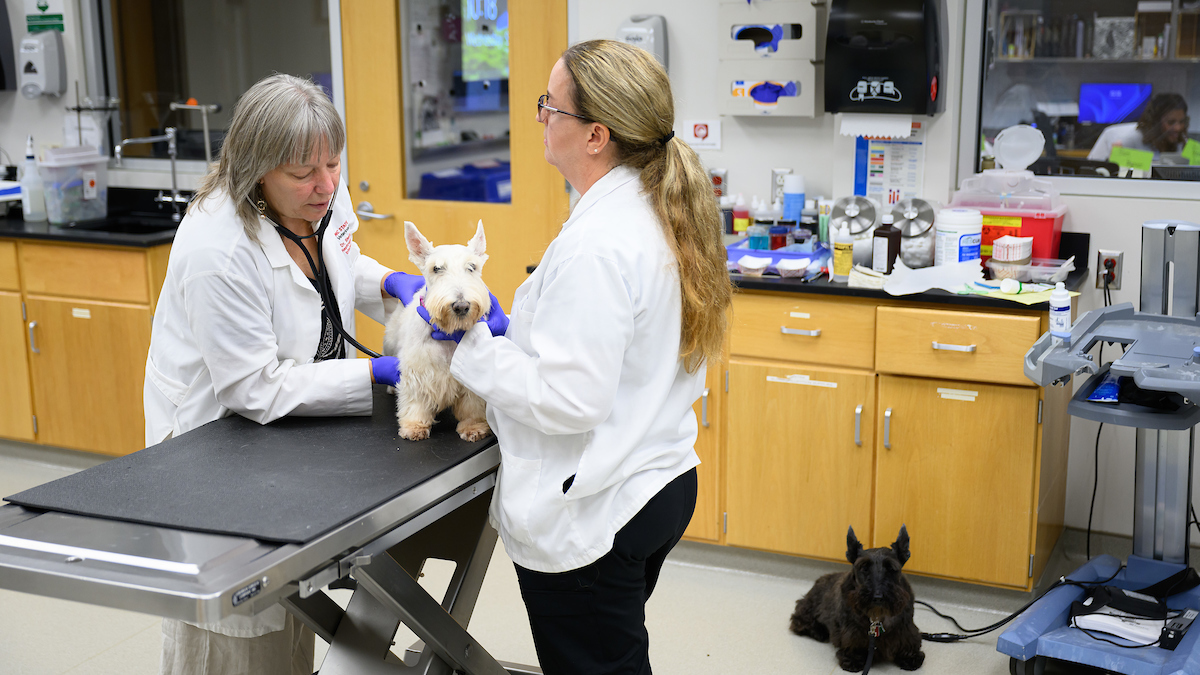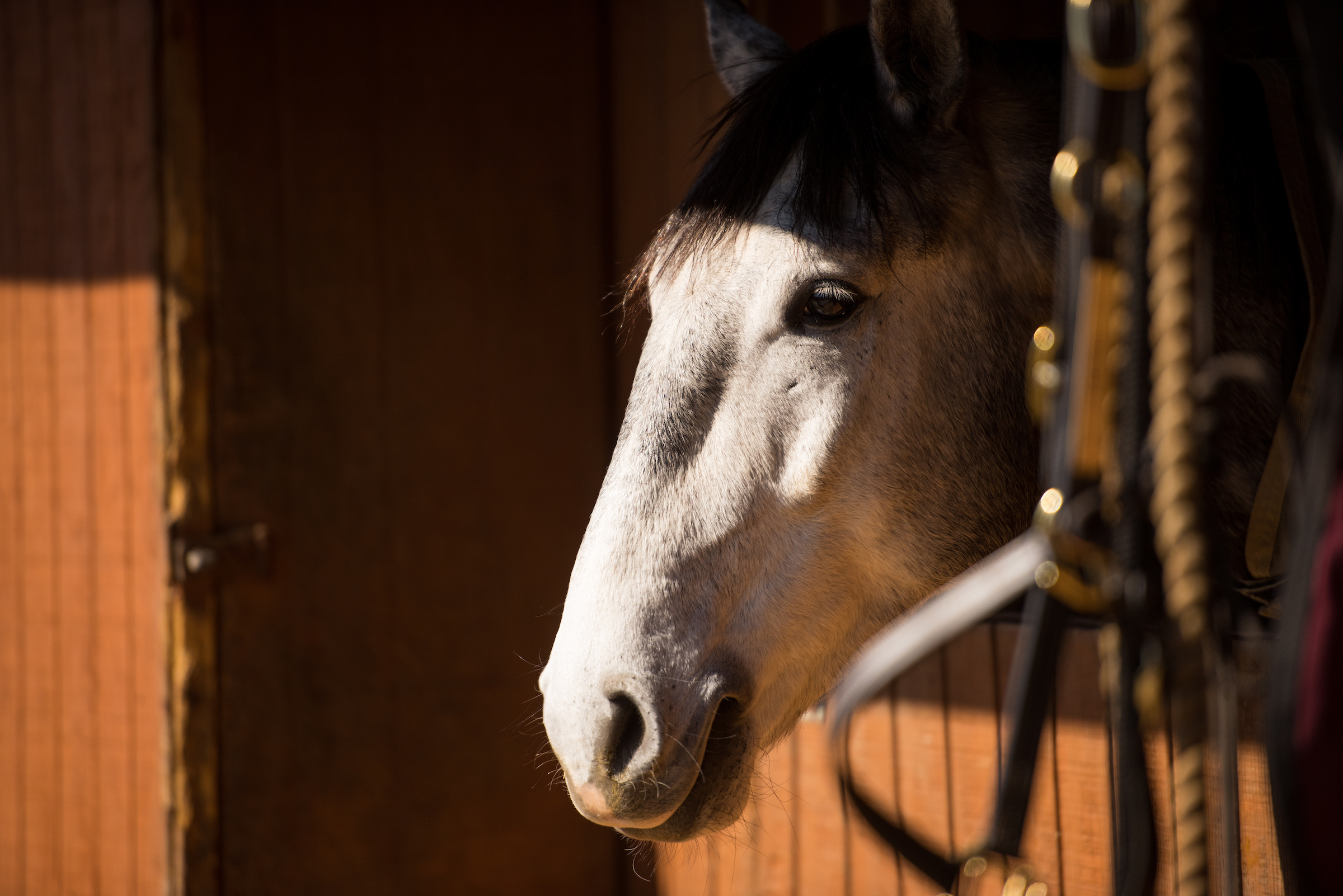For Vinny, NC State’s Standing Equine CT Provides a Clear Win Against Infection
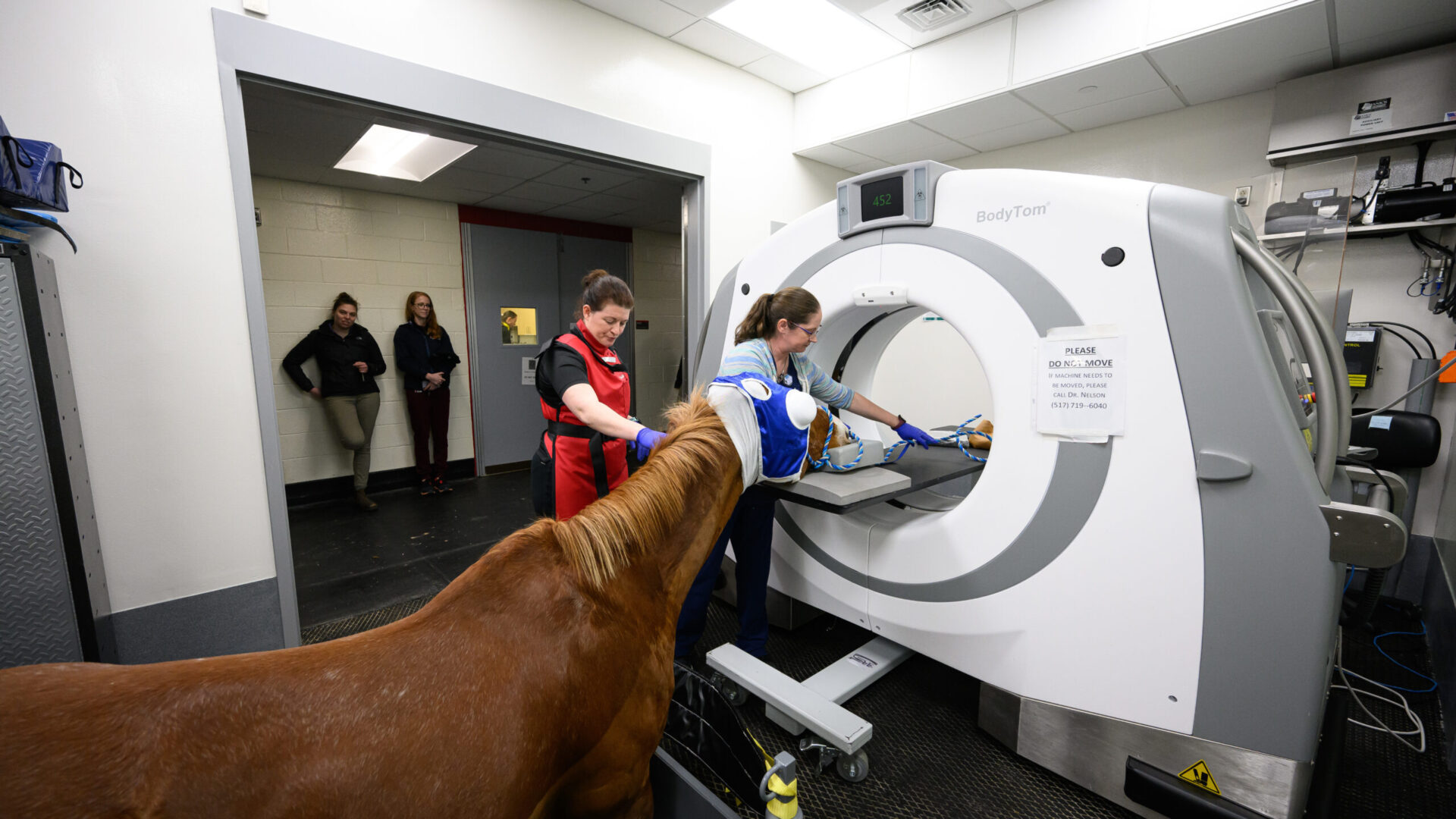
The X-ray of Vinny the chestnut horse’s head was shadowy, inconclusive about whether an infected tooth might be causing his chronic sinus drainage from one nostril.
Antibiotics had stopped the drainage for a while, but it returned in the same nostril, indicating Vinny had an infection of some sort and not a virus, says Cathy Lombardi, Vinny’s local veterinarian who serves at The Oaks Equine & Farm Services in Smithfield, Virginia.
Until NC State College of Veterinary Medicine installed a standing equine CT, the protocol would have been to keep trying antibiotics and hope the problem became clearer or even to remove the suspicious tooth without being confident it was the cause.
“With the CT, it was instantly obvious what tooth it was,” Lombardi says. “You could clearly see that the area between the sinus and oral cavity had been completely taken over by infection. It’s so obvious on the CT, and it’s just not obvious on the X-ray.”
A CT or computed tomography scan is a more sophisticated and powerful X-ray that takes a 360-degree image of organs, bones, soft tissue and blood vessels that can’t be seen as clearly on X-rays. With the help of generous donors, NC State installed a standing CT in its large animal veterinary center last year.
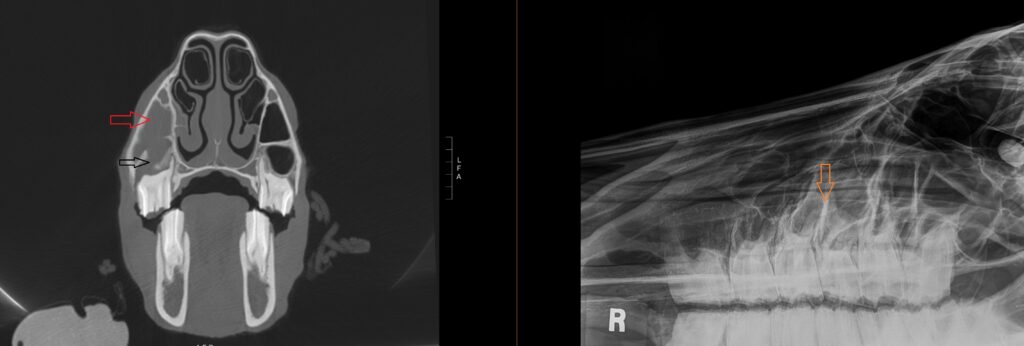
The standing CT allows horses to walk into stocks on a platform that then lowers the animal below the floor until its head is level with the scanner. The CT machine then moves back and forth over the horse’s head and neck. Though the horses are sedated, they don’t have to be put under general anesthesia, which is a huge benefit for animals their size.
“With the standing CT, we do not have to anesthetize a horse and put them on their side or back to get these images,” says Dr. Callie Fogle, a professor of equine surgery who performed Vinny’s surgery. “Especially with older horses like Vinny, sometimes it can be more difficult for them to stand up from general anesthesia.”
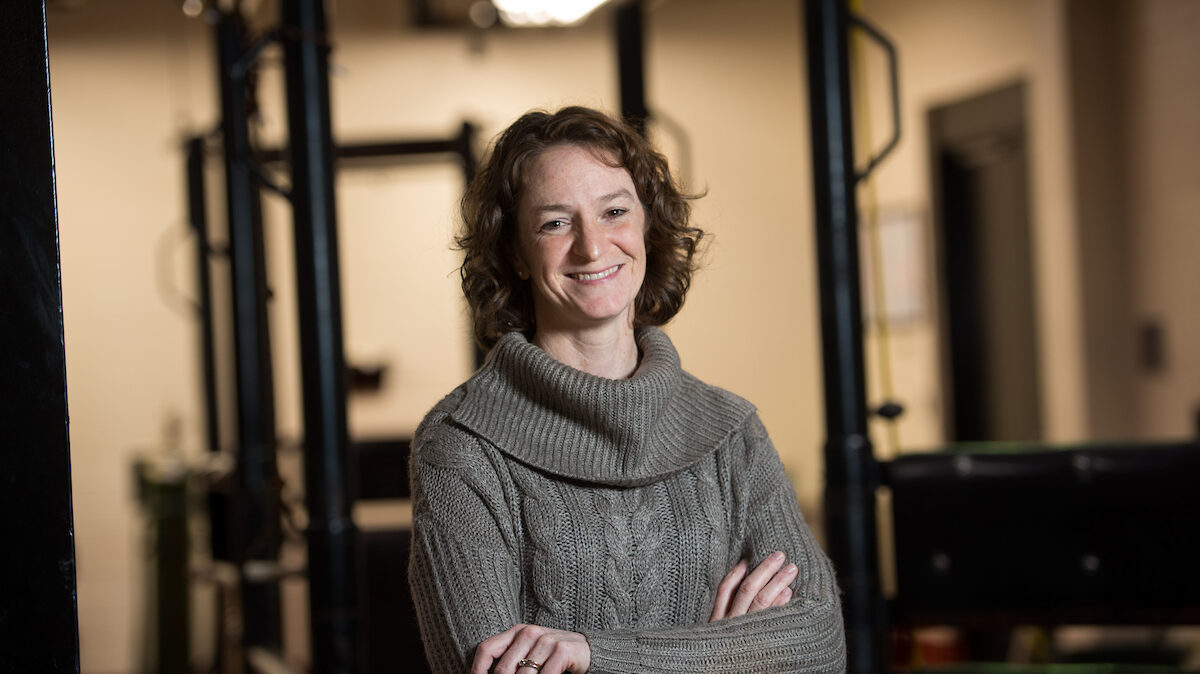
The CT scan allows for a confident diagnosis that then can be treated surgically, whether it’s a tooth abstraction or sinus mass removal. The ability to diagnose and treat disease of the horse’s head while the horse is standing has also made it safer and less expensive.
“Having access to these very detailed three dimensional images from the CT scan as a part of the work-up in most of our head surgeries allows us to perform better presurgical planning and a more thorough and focused surgery, which means a better chance of resolving the disease,” Fogle says.
Lisa Bambury of Chesapeake, Virginia, has had her Vinny for 11 years, and Lombardi has been his veterinarian the whole time. Bambury describes Vinny, her first horse, as the class clown.
“All he wants to do is run around and play,” says Bambury, who rode horses in her teens but returned to horse-riding seriously in her 40s. “Either you’re born adoring horses or you’re not. My husband has learned to love Vinny. He’s never been around them and didn’t realize they have personalities and attach to their person. Vinny is very playful. And curious.”
After she began treating Vinny’s nasal discharge in November, Lombardi suggested they send the inconclusive X-rays to NC State equine experts, who recommended that Vinny have the CT scan.
“They read them and said,’This one tooth looks suspicious, but it’s inconclusive,’” Bambury says. “And there was nothing wrong with any of the teeth on oral examination. They weren’t loose. They weren’t cracked.”
Bambury arrived with Vinny in Raleigh on a Wednesday, and he went immediately to the CT scan. Bambury and the veterinarians had the results within the hour and scheduled surgery to remove the tooth and clean out the infection contained within his sinus the next day.
Vinny went home that Sunday with a catheter in his nose so that Bambury could flush his sinuses for several more days.
“That CT scan is 100 percent appreciated,” Bambury says. “Without it, you’re lacking pieces of the puzzle going in to do surgery. Something’s wrong, you know it’s wrong, but you don’t know exactly where to go without that tool. We appreciate it 100 percent.”
Lombardi says, as a veterinarian, knowing that NC State’s experts and state-of-the-art equipment are available gives her and her clients peace of mind.
“The nice thing about the college is you’ve got a whole lot of experts under one roof and the latest and greatest in diagnostic equipment, and that’s really a huge asset for our clients to have access to,” she says. “This is one of these really good cases where we were able to get a clear definitive answer really quickly and resolution very quickly, too. Everyone was very happy, including the horse.”
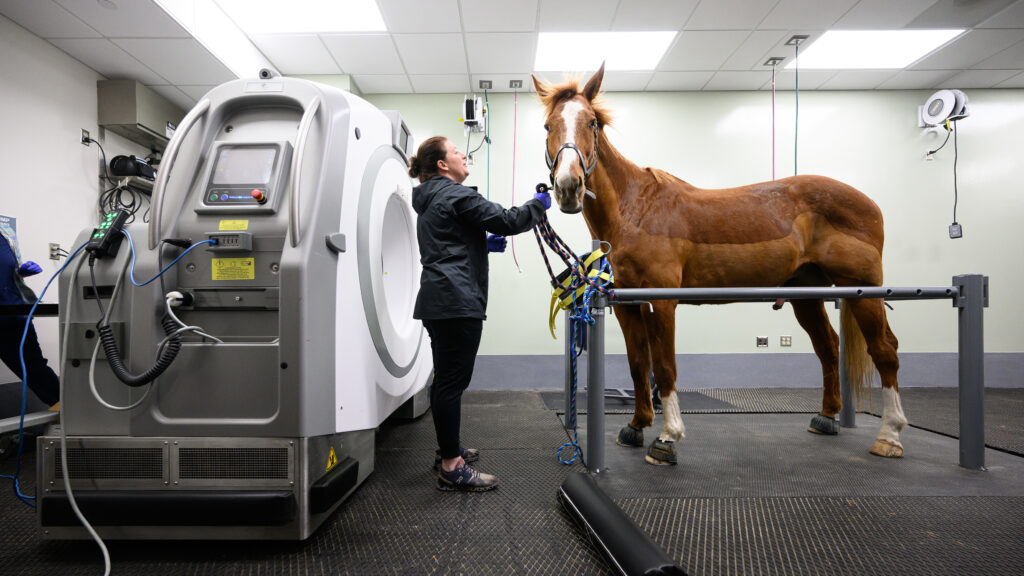
- Categories:
